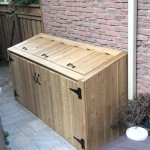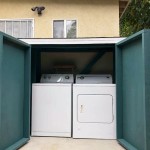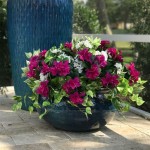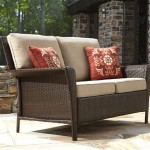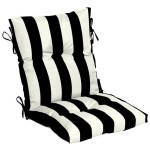Under 44 Inches Outdoor Ceiling Fans: A Guide to Selection and Application
Outdoor ceiling fans provide a functional and aesthetic benefit to exterior living spaces. They circulate air, creating a more comfortable environment during warm weather and can also deter insects. Choosing the right fan involves considering several factors, including size, blade material, motor type, and overall design. For smaller patios, porches, or covered decks, outdoor ceiling fans under 44 inches in diameter offer a suitable solution. These fans provide adequate airflow without overwhelming the space. This article explores the key considerations in selecting and applying outdoor ceiling fans with a diameter of 44 inches or less.
The specified dimensions of under 44 inches refer to the blade span, measured from the tip of one blade across the center of the fan to the tip of the opposing blade. This measurement determines the area the fan can effectively cool. Selecting the appropriate size fan is crucial for achieving optimal performance and energy efficiency. A fan that is too small will not adequately circulate air, while one that is too large will consume unnecessary energy and may create an uncomfortable draft.
Before delving into specific feature considerations, it's important to confirm that any selected fan is designated for outdoor use. Outdoor ceiling fans are constructed with materials and finishes that withstand exposure to moisture, humidity, and temperature fluctuations. These fans are typically Wet Rated or Damp Rated, indicating their suitability for different levels of outdoor exposure. Wet Rated fans can withstand direct contact with rain and snow, making them ideal for uncovered patios or areas with minimal overhead protection. Damp Rated fans are suitable for covered porches or patios where they are sheltered from direct precipitation but may be exposed to humidity and moisture.
Blade Material Considerations
The material used to construct the fan blades is a critical factor in determining its durability and performance in an outdoor environment. Common materials include plastic, wood, and metal, each offering distinct advantages and disadvantages.
Plastic blades are typically the most affordable option and are highly resistant to moisture and corrosion. They are lightweight, which can contribute to quieter operation and reduced motor strain. However, plastic blades may be less aesthetically pleasing than other materials and can be susceptible to fading or discoloration over time, especially when exposed to direct sunlight. Some high-quality plastic blades offer improved UV resistance and durability.
Wood blades, whether solid wood or laminated wood, offer a more natural and aesthetically appealing look. They are typically more expensive than plastic blades but provide a richer, more luxurious appearance. Wood blades require a protective finish to prevent warping, cracking, or decay when exposed to moisture. Marine-grade finishes are often recommended for outdoor wood blades to ensure long-lasting durability. The type of wood used also influences its resistance to environmental factors. Teak, for example, is a naturally weather-resistant wood commonly used in outdoor furniture and fixtures.
Metal blades, typically made of aluminum or steel, are known for their durability and resistance to bending or breaking. They are a good option for areas prone to strong winds or other harsh weather conditions. Metal blades are often treated with a rust-resistant coating to prevent corrosion. However, metal blades can be heavier than plastic or wood blades, which may require a more powerful motor. They can also be more susceptible to noise if not properly balanced.
Motor Type and Performance
The motor is the heart of the ceiling fan, and its type and performance directly impact the fan's efficiency, noise level, and longevity. Two primary motor types are commonly used in ceiling fans: AC (Alternating Current) and DC (Direct Current).
AC motors are the traditional and more widely used type. They are generally less expensive than DC motors and offer reliable performance. However, AC motors are typically less energy-efficient and noisier than DC motors. They also usually have fewer speed options, typically three speeds (low, medium, high). The energy efficiency of an AC motor is often rated using the CFM/Watt (Cubic Feet per Minute per Watt) ratio, which indicates the amount of airflow generated per unit of energy consumed. Higher CFM/Watt ratios indicate greater energy efficiency.
DC motors are a more recent development in ceiling fan technology. They are significantly more energy-efficient than AC motors, often consuming up to 70% less electricity. DC motors also operate more quietly and offer a wider range of speed options, typically six or more speeds. This allows for more precise control over airflow and comfort. DC motors are typically more expensive than AC motors, but their energy savings can offset the higher initial cost over time. Furthermore, DC motors are generally smaller and lighter than AC motors, which can simplify installation.
Regardless of the motor type, it is important to consider the motor's horsepower and RPM (Revolutions Per Minute) rating. Higher horsepower motors are capable of generating more torque, which is necessary for moving larger blades or operating at higher speeds. The RPM rating indicates the speed at which the blades rotate, which directly affects the airflow. Different RPM settings are appropriate for different room sizes and personal preferences.
Lighting and Control Options
Many outdoor ceiling fans include integrated lighting fixtures, providing both air circulation and illumination. When selecting a fan with lighting, consider the type of light source, the brightness, and the style of the fixture.
LED (Light Emitting Diode) lighting is the most energy-efficient option. LED bulbs consume significantly less electricity than incandescent or halogen bulbs and have a much longer lifespan. LED lighting also offers a wide range of color temperatures, allowing you to customize the ambiance of your outdoor space. Warm white light (around 2700-3000K) is typically preferred for creating a cozy and inviting atmosphere, while cool white light (around 4000-5000K) provides brighter, more focused illumination.
The brightness of the lighting fixture is measured in lumens. The number of lumens required depends on the size of the space and the desired level of illumination. For a small patio or porch, a lighting fixture with 800-1000 lumens may be sufficient. For larger areas, a brighter fixture with 1500 lumens or more may be necessary. Dimmable lighting is a useful feature that allows you to adjust the brightness according to your needs.
Control options for outdoor ceiling fans typically include a pull chain, a wall control, or a remote control. Pull chains are the simplest and most affordable option, but they require you to manually adjust the fan speed and lighting. Wall controls provide more convenient access to the fan's functions and can often be used to control multiple fans simultaneously. Remote controls offer the greatest flexibility, allowing you to adjust the fan speed and lighting from anywhere within range. Some remote controls also include features such as timers and breeze modes, which automatically vary the fan speed.
Beyond these core considerations, several other factors can influence the choice of an outdoor ceiling fan. The style and finish should complement the overall aesthetic of the outdoor space. Consider the pitch of the blades, as a steeper pitch typically results in greater airflow. Check the fan's warranty to ensure it is adequately protected against defects and damage. Finally, read reviews and compare prices from different retailers to find the best value for your money.
Proper installation is critical for ensuring the safe and efficient operation of an outdoor ceiling fan. If you are not comfortable with electrical work, it is recommended to hire a qualified electrician to perform the installation. The fan should be securely mounted to a structural support capable of handling its weight and vibration. Follow the manufacturer's instructions carefully, and ensure that all wiring connections are properly insulated and grounded.
In summary, selecting an outdoor ceiling fan under 44 inches involves careful consideration of blade material, motor type, lighting options, and control methods. By evaluating these factors and prioritizing durability, performance, and aesthetic appeal, it is possible to choose a fan that enhances the comfort and enjoyment of your outdoor living space. Remember to prioritize safety and proper installation to ensure long-lasting and reliable operation.

44 Casa Vieja Plaza Dc Matte Black Damp Rated Ceiling Fan With Remote 86p23 Lamps Plus

44 Minka Aire Simple White Outdoor Ceiling Fan With Remote Control 43k28 Lamps Plus

Hunter Fan 50262 Cassius 44 Inch Fresh White With Light Stripe Blades Outdoor Ceiling

44 Minka Aire Simple Coal Outdoor Ceiling Fan With Remote Control 61r08 Lamps Plus

Westinghouse Halley 44 Inch Three Blade Indoor Outdoor Ceiling Fan Oil Rubbed Broe Finish With Di

Minka Aire Simple 44 Indoor Outdoor Ceiling Fan In Coal

Westinghouse

Hampton Bay Mena 44 In Led Indoor Outdoor Matte Black Ceiling Fan With Light Kit And Reversible Blades Included 92404 The Home

Hunter Fan 50260 Cassius 44 Inch Matte Black With Walnut Stripe Blades Outdoor Ceiling

Hunter Kennicott Outdoor 44 Inch And Wall Control Fan
See Also


